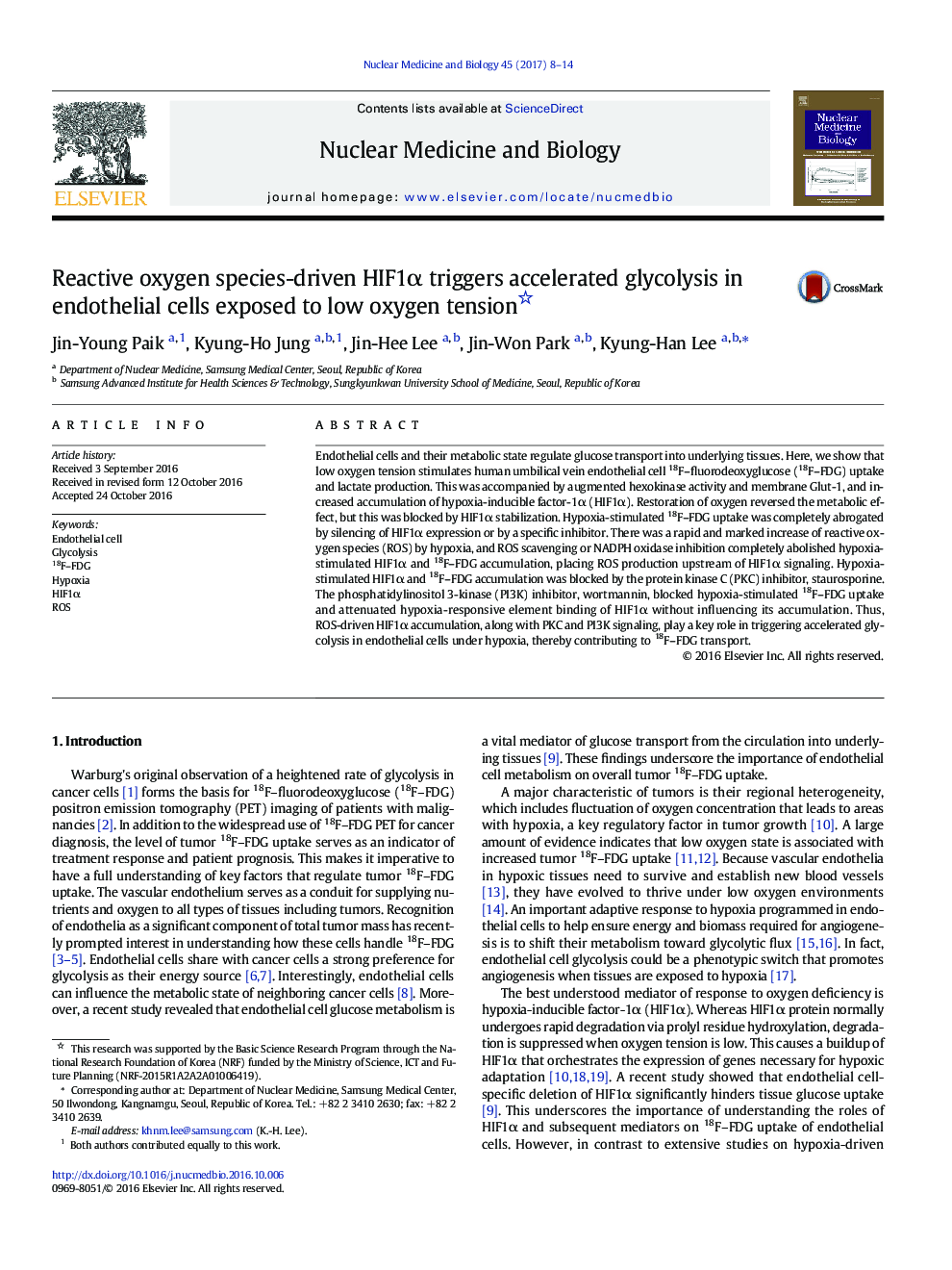| Article ID | Journal | Published Year | Pages | File Type |
|---|---|---|---|---|
| 5529094 | Nuclear Medicine and Biology | 2017 | 7 Pages |
Endothelial cells and their metabolic state regulate glucose transport into underlying tissues. Here, we show that low oxygen tension stimulates human umbilical vein endothelial cell 18F-fluorodeoxyglucose (18F-FDG) uptake and lactate production. This was accompanied by augmented hexokinase activity and membrane Glut-1, and increased accumulation of hypoxia-inducible factor-1α (HIF1α). Restoration of oxygen reversed the metabolic effect, but this was blocked by HIF1α stabilization. Hypoxia-stimulated 18F-FDG uptake was completely abrogated by silencing of HIF1α expression or by a specific inhibitor. There was a rapid and marked increase of reactive oxygen species (ROS) by hypoxia, and ROS scavenging or NADPH oxidase inhibition completely abolished hypoxia-stimulated HIF1α and 18F-FDG accumulation, placing ROS production upstream of HIF1α signaling. Hypoxia-stimulated HIF1α and 18F-FDG accumulation was blocked by the protein kinase C (PKC) inhibitor, staurosporine. The phosphatidylinositol 3-kinase (PI3K) inhibitor, wortmannin, blocked hypoxia-stimulated 18F-FDG uptake and attenuated hypoxia-responsive element binding of HIF1α without influencing its accumulation. Thus, ROS-driven HIF1α accumulation, along with PKC and PI3K signaling, play a key role in triggering accelerated glycolysis in endothelial cells under hypoxia, thereby contributing to 18F-FDG transport.
